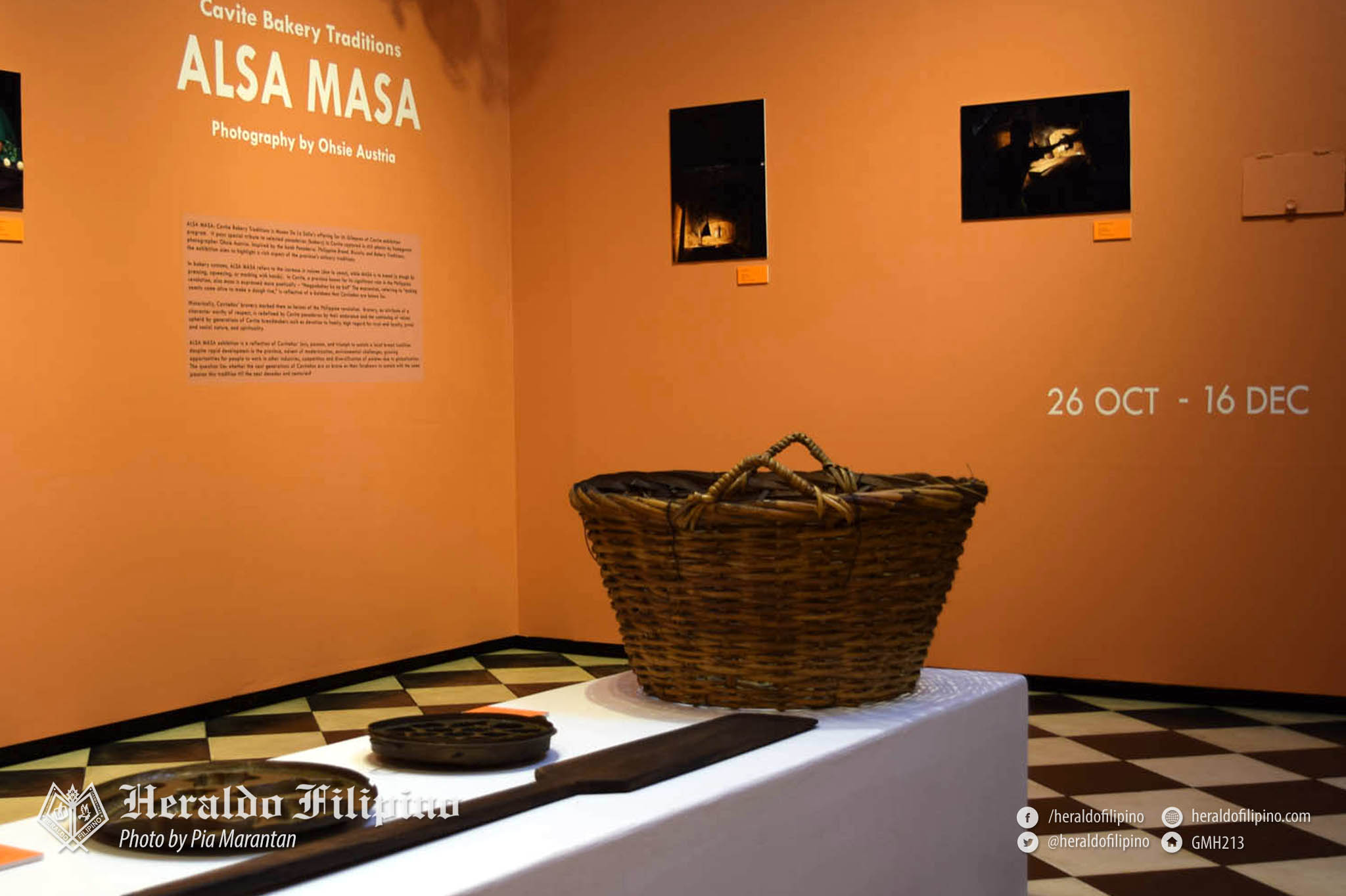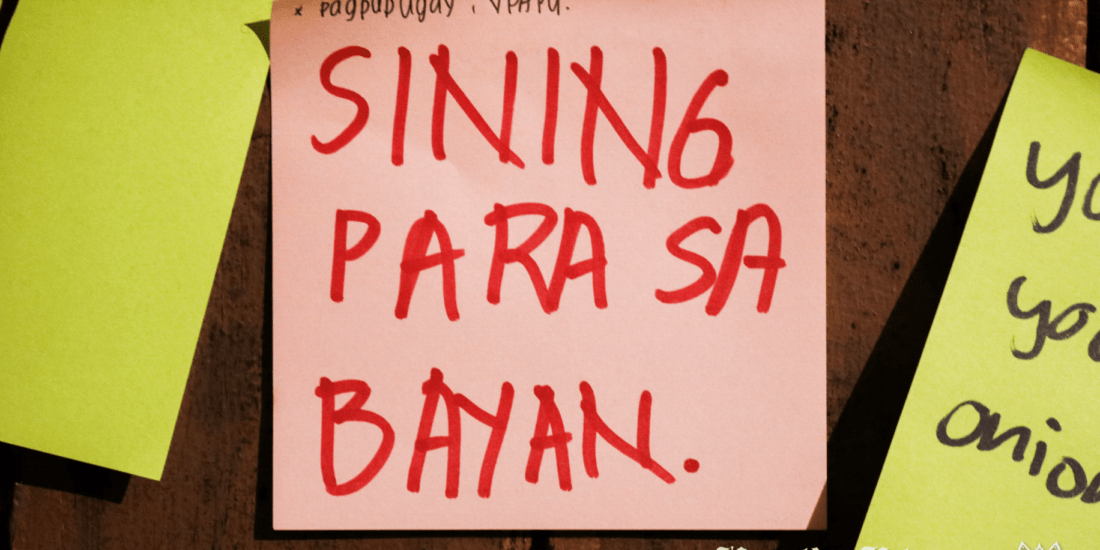Museo De La Salle holds HeARTbeats, ALSA MASA exhibits
In celebration of Museums and Galleries Month 2017, Museo De La Salle opened ALSA MASA: Cavite Bakery Traditions and HeARTbeats: The Romeo Ariniego MD Art Collection exhibits last October, which showcased the rich pastry culture of Cavite and Dr. Ariniego’s visual arts collection, respectively.

ALSA MASA
The exhibit, featuring different panaderias from various parts of Cavite as captured by photographer Ohsie Austria, portrays the Caviteños’ joys, passion, and triumph to sustain the local bread tradition despite the rapid development in the province.
The exhibit is accompanied by written works by Ige Ramos and excerpts from the book Panaderia: Philippine Bread, Biscuits and Bakery Tradition written by Jenny Orillos and Amy Uy, describing how the Philippine and Cavite pastry industry thrived throughout time. Also shown in the exhibit are the antique equipment utilized in the traditional bread-making process.

Cavite bread history
Originally, bread wasn’t a part of the typical Filipino staple food. However, due to Cavite’s location, the province was occupied by bread-consuming nations such as Spain and America who taught the local population techniques in planting wheat and bread-making.
In order to provide the daily bread needs of the colonizers, panaderias learned and sold varying breads and pastries, among which are the Pan Americana and the classic pan de sal. The pan de sal was traditionally cooked inside a pugon, or wood-burning oven, sold around town by vendors on bicycles who announced their presence using horns and “potpot”.
Even locals patronized the bread that eventually led to the construction of more panaderias. According to culinary historian Ige Ramos, a practice among Caviteños is that they pair different foods, also called “terno–terno” or “tono–tono”. To name a few, the pan de sal, salakot, bonete, bangka-baka, among others, are paired with fillings like white cheese, coconut jam, or ice cream/sorbetes.

Local bread scene
Featured in the exhibit are bakeries from all around Cavite representing the local bread scenes in Cavite City, Silang, Tanza, and Tagaytay. Among these bakeries are the Baloy’s Bakeshop, Breads and Burgers, Dizon’s Bakery, Roadside Breads and Burgers, Silang Bakery, Kaibigan Bakery, Noceda Bakery and Malen’s Bakery.
In the still photos captured through Austria’s lens, the drive of these Cavite bakeries in providing the daily pastry needs of their area is evident. “Suki” as they call regular customers who patronize these local bakeries and “pugon,” the traditional bread making oven which is still used by Kaibigan Bakery, were also shown by Austria.
The title of the exhibit itself, “ALSA MASA”, is rooted from terms that describe the traditional baking process. Alsa refers to the increase in volume, while Masa refers to kneading the dough by pressing, squeezing, or moshing by hands. However, for Caviteños, this is expressed more poetically as “Nagpabuhay ka na ba?” which refers to “making yeast come alive to make a dough rise.”
Orillos and Uy described the Cavite bakery terms as “beautiful, it is almost poetic,” reflecting how the maestro panadero looks at the world through bread. “It was then how we knew that to make and eat breads and biscuits of Cavite is to live in the midst of poets at heart,” they wrote.
Continuing the legacy
With the continuing development in the province, there is a challenge for local panaderias to keep up with the changing landscape. Since millennials are exposed to quicker varieties of bread, traditional panderias have seemed to lose their appeal. They are confronted by realities such as the decision to stay with the traditional pugon or convert into gas ovens.
However, with the continuous emergence of new and small-scale bakeries in every neighborhood, it is evident that bread has become part of the Filipino and Caviteño staple.

HeARTbeats
“HeARTbeats: The Romeo Ariniego MD Art Collection”, a visual arts exhibit collection by Dr. Romeo Ariniego, a cardiologist from De La Salle Health Sciences Institute, showcases the works of local artists Jose Joya, Eduardo Castrillo, Oscar Zalameda, Solomon Saprid, Robert Nubla, Onib Olmedo, Emmanual Garibay, Elmer Borlongan, Amado Castrillo, Zandro Castrillo, Ernie Verroya, and Wilfredo Alicdan.
Along with their visual arts to show in the exhibit comes the artists’ different and inspiring life stories to share to the DLSU-D community who wish to know more about not just the art, but the artists as well.
For instance, National Artist for Visual Arts Jose Joya was the first Bachelor of Arts in Fine Arts magna cum laude of the University of the Philippines (UP) in 1953. He also became the President of the Art Association of the Philippines in 1962-1965, Amorsolo Professional Chair in UP in 1985, and Philippine delegations to China Chairperson in 1961 and 1972.
Another Cavite artist, Emmanuel Garibay, finished his degree in Bachelor of Arts in Fine Arts in UP Diliman. Garibay also received awards during his career, such as the Thirteen Artists Award from the Cultural Center of the Philippines in 2000 and Diwa ng Sining Award from the National Commission for Culture and the Arts in 1994.
“Man with a Rooster” by Emmanuel Garibay
Aside from Joya and Garibay, the rest of the local artists who shared their artwork in the HeARTbeat exhibit also have much more to share than just their skills and forte in their art. Behind every art piece comes an artist who struggled for his arts to be known in the industry where most people, sadly, don’t have the time to turn their eyes to the works of Filipino artists like before.

Through this exhibit, the DLSU-D community can now take experience the artworks of Filipino artists, and maybe Filipinos can patronize our own culture just as much as foreign artists.
The artworks of the other local artists include brass sculptures titled “Untitled” and “Tikbalang”, a mixed-media sculpture titled “The Fisherman”, and an acrylic on canvas artwork titled “Flower Vendors”.
Other than the exhibit showcasing the works of Filipino artists, the exhibit also featured 19 significant life events of Dr. Ariniego, symbolized as a heartbeat for the existence of life.
***
The ALSA MASA: Cavite Bakery Traditions and HeARTbeats: The Romeo Ariniego MD Art Collection exhibits are open for viewing until December 16 and 9, respectively.



